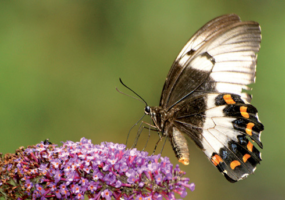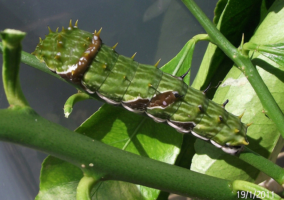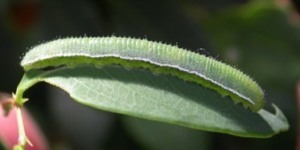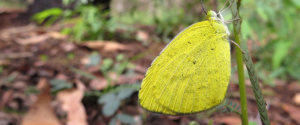Seeing leaves being eaten by caterpillars can be very frustrating for the urban gardener. It can be tempting to spray them. But if we are serious about wildlife then caterpillars are a vital part of local biodiversity and food supply for other wildlife and often transform into beautiful butterflies and moths. In this series of articles I will try to link caterpillars I have seen in my gardens with beautiful butterflies and moths, and the plants they feed on. Caterpillars change as they grow and can be difficult to identify! I am not an entomologist and any corrections and new information is very welcome from members! Email us. Also send in good quality photos of your own caterpillars and we will see if we can identify them!
Orchard Swallowtail
Caterpillars are found on exotic citrus and local members of the Rutaceae family including Native Citrus and Boronia from October through to May. The caterpillar eats for four weeks then becomes a pupa for two weeks before emerging as a butterfly. The butterfly loves feeding on exotic Lantana camara or native Callicarpa pedunculata (Velvet Leaf).
A very similar butterfly is the Dainty Swallowtail, with a darker caterpillar and a smaller but similar appearance.
Images and information courtesy of https://www.climatewatch.org.au/species/insects/orchard-swallowtail
Wanderer Butterfly
This caterpillar is found across the world and was first recorded in Australia in late 19th Century. It may have been a natural migrant. The beautiful striped caterpillars become a large black and orange butterfly. Some consider it the most beautiful insect in the world. In Australia its food plants are all from the Milkweed family (Apocynaceae), which includes weeds such as Wild Cotton, and also local plants such as Hoya australis (Australian Wax Flower). Some gardeners actively cultivate weedy Wild Cotton to provide a ready food source to attract this butterfly.
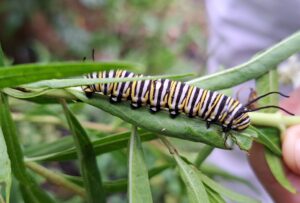
Photo taken by Shaun Walsh in John Birbeck’s garden at Black Mountain
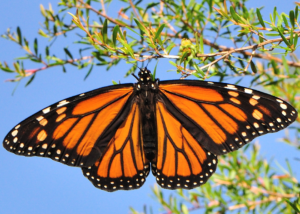
Image courtesy of https://www.brisbaneinsects.com/brisbane_nymphs/wanderer.htm
Large Grass Yellow
These butterflies are common, breed quickly, build up large numbers and are migratory. They fly very quickly, are easily found fluttering close to the ground and we can see them in all seasons. The butterfly uses some of the waste product of the chrysalis to form their yellow colouring. The female is usually paler in colour with broader black margins.
The caterpillar feeds locally on native Coffee Bush Breynia oblongifolia as well as Acacia spp.
Images and information courtesy of https://www.butterflyencounters.com.au/Large_Grass_Yellow.html and https://www.butterflyhouse.com.au/butterfly/large-grass-yellow/ and https://brisbaneinsects.com/brisbane_whites/COLIADINAE.htm
Lily Moth
Images and information courtesy of https://lepidoptera.butterflyhouse.com.au/acro/picta.html
Attacking, and often decimating our local Swamp Lilies (Crinum pedunculatum) at this time of year, is the Lily Caterpillar and Moth. They devour the Swamp Lilies in days, but the resultant moth is like a tribal art piece!
The caterpillars grow to a length of about 5 cms and pupate with no cocoon in the soil near the food plant.
In my own garden I have found that my Swamp Lilies in pots with no mulch are not favoured by the caterpillars. I have a hypothesis that the pupae prefer mulch as shelter, and perhaps I inadvertently break the breeding cycle.
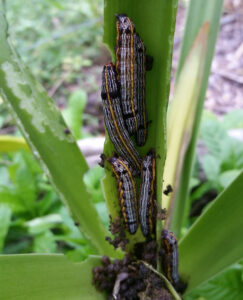 Photo by Vanessa Presling
Photo by Vanessa Presling
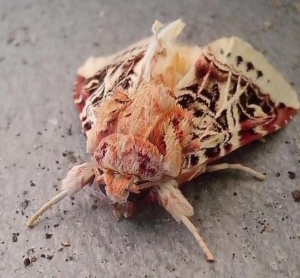
Images and information courtesy of https://lepidoptera.butterflyhouse.com.au/acro/picta.html
Shaun Walsh



